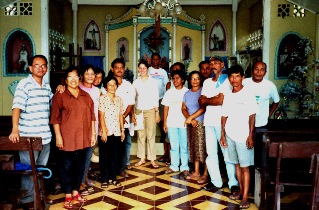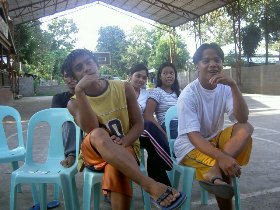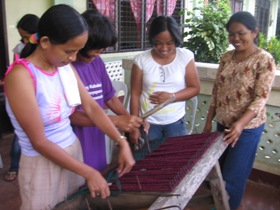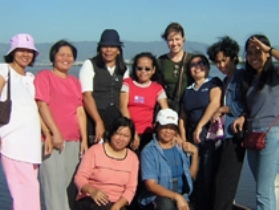| A Catalyst for Community Partnering Finding Institutional Partners Recruiting and Training Community Researchers Conducting Research with Community Members Presenting Research Findings Sustaining Partnerships |
Conducting Research with Community MembersThe Community Researchers are an important link to various groups in the community. Initially it is these groups that are drawn into the action research process. As the process unfolds Community Researchers reach out beyond their immediate networks to link up with other people who may be able to contribute time or expertise. Working with the wider communitiy involves:
Information Sessions
As Community Partnering proceeds hold regular information sessions to let people know what is happening. Invite people to join in and contribute at any stage of the process. Interviews and Small Group DiscussionsAs Community Researchers begin to identify people who might be interested in Community Partnering for Local Development they will need to use some of the ABCD-DEF research tools. They may gather together a small group for interviews and discussion or conduct one-to-one interviews with possible participants. Small group discussion People who are un-used to being the subject of research are often more comfortable in small groups when being asked questions. In an action research project it is good for people to hear about theexperience of others. The Portrait of Gifts exercise is best conducted in a small group. In pairs people can interview each other and share what they have found out with the whole group. People begin to see the gifts of their fellow community members and revalue their contributions. Snowball interviewing This method involves finding people to interview by tracing networks. A Community Researcher might start with someone they know well. Each person interviewed then recommends others they know who might be interested to be interviewed. The group of interviewees grows like a snowball. This may be a good way of finding out who could be interested in joining an enterprise feasibility group. Community BrainstormsA series of community brainstorms is the best way to generate ideas about how to mobilize the assets at hand. At these events it is useful to display results of the Assets and Needs Mapping and Local Economic Inventory. Using a mix of visual and written materials will reach the widest audience. Either in a lage group, or in smaller breakout groups aks participants to brainstorm ideas for building on local assets. Community Researchers should be ready to take down all the ideas generated. At teh conclusion of the brainstorm community members are invited to identify which ideas they would like to prioritize. The pros and cons of each idea may be debated. Working With Existing NetworksA bank of ideas will have been generated by the community brainstorming. The next task for Community researchers is to find people who might be interested in mobilizing to make these ideas a reality.
Supporting Enterprise DevelopmentCommunity Researchers can facilitate the enterprise development phase by joining one of the enterprise feasibility teams or keeping close contact with a self-led team. They can help to design and organize the feasibility study activities. Community Researchers will have the benefit of having seen other community enterprises in operation and this might assist them in directing the group.
|



